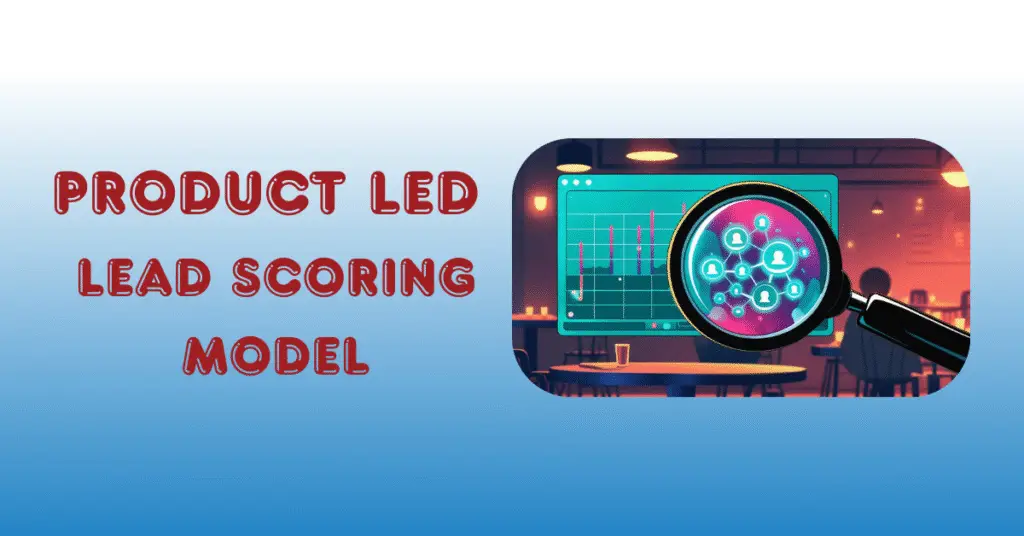
Could your next big sale be hiding in plain sight? Dive into our product led scoring model and uncover the secret signals that turn every click into a revenue goldmine!
Imagine hosting a dinner party where you judge your guests’ appetite only by their RSVP—and then wonder why half of them leave hungry. That’s what a traditional lead scoring model feels like: you’ve got names on a list, but no real sense of who’s truly hungry for what you’re serving. Now, picture swapping out those RSVP guesses for live feedback: you watch guests nibble the appetizers, refill their plates, and linger by the dessert table. That’s the essence of a product led scoring model—using real-time product usage metrics to see who’s genuinely engaged and prime for a deeper conversation.
This refined product led scoring model turns product usage into something more like a carefully curated tasting menu. Every click, feature adoption, and activation milestone signals, “Serve this person the next course”—or in sales terms, “Reach out about this capability.” Whether your team is pursuing a product‑led growth or developing an internal product‑led growth strategy, integrating usage data into your product led scoring model shifts the focus from “Who signed up?” to “What do they want to feast on next?” And that, in turn, enables more natural and effective product-led sales conversations—so nobody goes home hungry.
A Quick Refresher on Traditional Lead Scoring: Why It Falls Short
Think of your classic lead scoring model as a paper map: it gets you in the proper city, but you’re navigating blindfolded once you arrive. Traditional lead scoring leans heavily on firmographics (company size, industry) and one-off behaviors (email opens, form fills). You assign point values—10 for a webinar signup, 5 for a whitepaper download—and hope the highest scorers are your best prospects.
But here’s where that old approach—and not a product led scoring model—shows its limits:
- Static Snapshots: Scores rarely update in real time. A lead who binge-tested your product last week still has the same score today, even if they haven’t returned.
- Assumed Intent: Clicking “Download” doesn’t guarantee hunger for your solution. Without product context, signals can be misleading.
- Missed Momentum: You might catch someone who matches your ICP on paper, but never uses your product.
In short, traditional lead scoring tells you who your leads are, but not how they’re engaging. It’s a starting point—and a blunt instrument—until you swap in a product led scoring model that adds the nuance of product‑led growth metrics.
Enter Product‑Led Growth: Shifting the Paradigm
Product led growth works for both pre‑sales and post‑sales engagement. During pre‑sales, lean into free trials and proof‑of‑concept projects. Monitor your guests while they sample the meal you’ve prepared. With a robust product led scoring model, the product itself becomes your most persuasive storyteller—every feature, interaction, and onboarding flow educates and excites. Rather than forcing prospects through gated content or rigid sales scripts, you let them explore at their own pace, using real-time signals from your product led scoring model to guide when marketing or sales should step in. In post‑sales, you’ll uncover underutilized features or concerns—critical signals in any forward‑looking product led scoring model.
Core Components of a Product‑Led Scoring Model
At the heart of a modern, product led scoring model are a few foundational elements:
- Behavioral Signals: Beyond sign‑up events, track depth of interaction: session frequency, features used, and pathways taken within your product.
- Activation vs. Engagement: Differentiate between a user who’s activated (completed an onboarding step) and one who’s deeply engaged (returns weekly, explores advanced features).
- Score Decay & Refresh: If activity stalls, let scores naturally degrade, and bump them back up when users re‑engage, keeping your model in sync with real‑world interest.
Together, these components ensure your product led scoring model prioritizes prospects based on genuine product momentum rather than just surface‑level behaviors.
Designing Your Product‑Led Scoring Framework
Building a winning product led scoring model starts with pinpointing those “aha” moments—features or milestones that reliably correlate with downstream value. For one SaaS team, it might be inviting collaborators into a workspace; for another, it’s setting up an automated workflow. Once you’ve catalogued these moments:
- Assign Weights Thoughtfully: Give higher point values to actions that signal deeper intent (e.g., creating a dashboard vs. merely logging in).
- Blend Traditional & Product Signals: Marry your firmographic inputs with real‑time usage metrics in your product led scoring model to balance reach with relevance.
- Test & Iterate: Launch your updated model to a subset of leads, compare conversion rates, and refine weights or decay rates until it reliably surfaces qualified prospects.
Conclusion & Next Steps
Traditional lead scoring felt like reading tea leaves—vague signs interpreted without context. By contrast, a product led scoring model reads the table: you see exactly who’s sampling, savoring, and returning for seconds. Ready to transform your scoring engine? Contact 4Thought Marketing for a consultation on building a custom product led scoring model. Let’s ensure nobody at your table leaves hungry.





